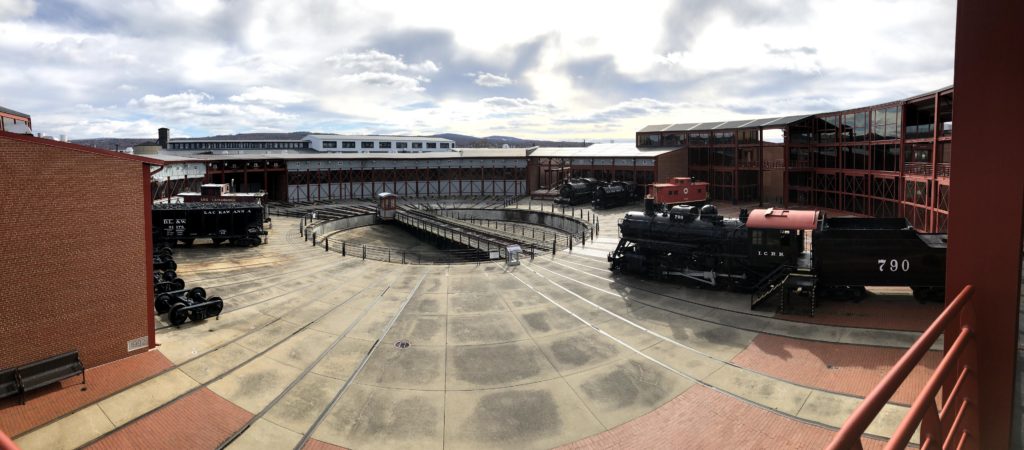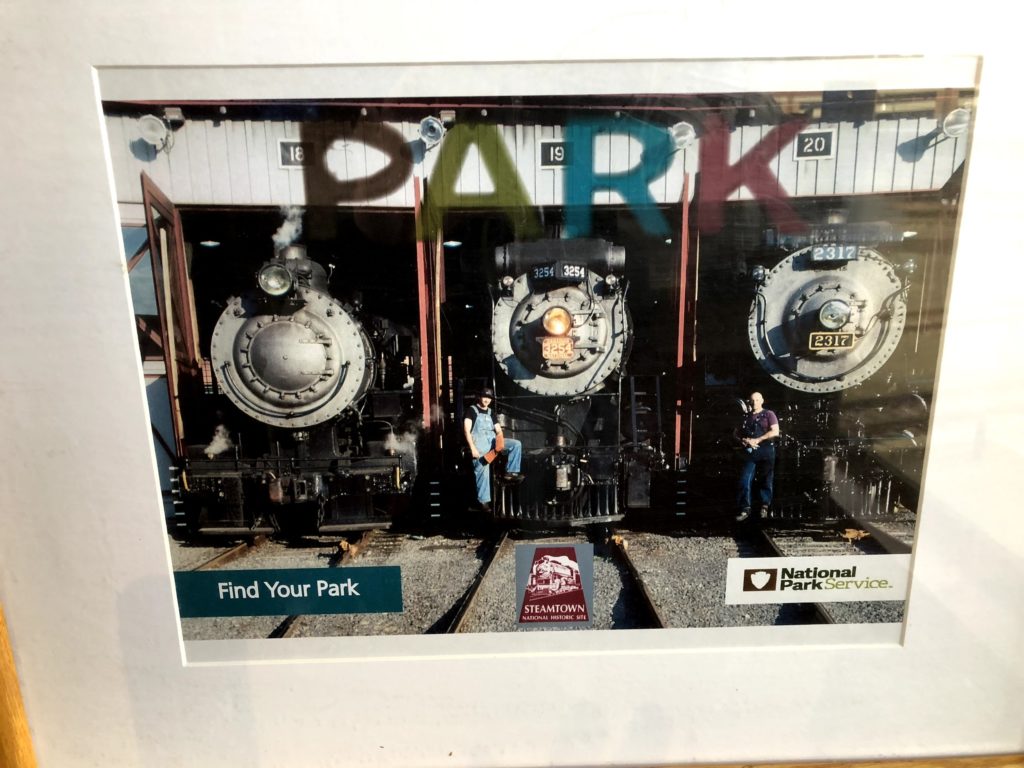Steamtown National Historic Site is the park service home of the steam locomotive, chronicling railroad history and its critical role in developing a nation. There’s a seemingly endless array of railroad nostalgia and history to explore. During my first visit, the machine shop tour left the biggest impression. The metal working equipment used for locomotive repair and maintenance is, as one park volunteer put it, “a machine shop on steroids.” Locomotive repair served just as much of a key role as railroad operation during the steam locomotive era. For every two hours a locomotive spent under steam required another two hours of downtime and maintenance. Recently, I had the opportunity to spend another full day exploring the park’s exhibits.
Steam locomotives are required to undergo a complete rebuild after 1472 days of operation. Modern diesel-electric engines go 15 years between complete rebuilds as opposed to 4 years during the steam era. The repair yards could turn around an engine rebuild in 4-8 weeks. Using volunteer labor and donations, it took the park 17 years to complete the last locomotive put into active service. Between 8 and 24 hours are required to bring a steam locomotive under steam. The next locomotive to be rebuilt will be the Boston & Maine #3713, better known as the Constitution. Built in 1934, the Constitution’s 80-inch wheels could reach speeds in excess of 100 mph during its years of passenger service on the Boston & Maine Railroad. Passenger engines typically feature larger diameter wheels for speed while freight engines have smaller diameter wheels for power and hauling capacity.
The heart of the park is the yard roundhouse and turntable. The turntable is designed for near perfect balance, so much so that it can be moved by hand. Dating to 1902 and rebuilt after a fire in 1937, the Scranton Delaware, Lackawanna & Western (DL&W) yard roundhouse contained 43 stalls, most dedicated to specific types of common repair and rebuild work. Only stalls 13-25 are original. The other two roundhouse sections at the park are reconstructed to their operational appearance and layout.
The story of the steam locomotive is the story of America’s growth and emergence as a global economic and industrial power. US railroad mileage peaked in 1916 with 254,037 miles of track crossing every region of the country. There are so many aspects of American history directly influenced or tied to railroad history. Railroad schedules provided strong justification for the establishment of the standard time zones we have today in November 1883. The stories of the industrial revolution and resulting labor movement can be told through railroad history. The railways served as the backbone of our nation’s commerce for over a century. The steam locomotive’s days were numbered after the introduction of the diesel-electric locomotive in 1925. At Steamtown, the railroad of our nation’s history comes alive again.


